Here’s an all inclusive list of the Fruits That Start with S. Some of them are going to surprise you for sure! Read on!
There are plenty of Fruits That Start With S, and each one has its own unique flavor and nutritional profile. Check out the bottom list for all the details
Fruits That Start with S
1. Saguaro Fruit
Botanical Name: Carnegiea gigantea
USDA Zones: 9-11
The Saguaro fruit comes from the Saguaro cactus, which grows in the Sonoran Desert. The fruit is eaten raw and has a sweet taste. As it is a desert plant, thus it can grow even in harshest conditions.
2. Saigon Mango
Botanical Name: Mangifera indica
USDA Zones: 10-12
Saigon Mango is a variety of mango that originated in Vietnam in the early 20th century. It has a sweet and juicy flavor with a strong aroma. The best part of growing this variety is the fruit—that can be consumed or harvested even before it ripens.
3. Salak

Botanical Name: Salacca zalacca
USDA Zones: 11-12
Salak, also known as snake fruit, is a species of palm tree native to Indonesia. It has scaly skin and white, juicy flesh with a sweet and sour flavor. The fruit taste is a mix of juicy pineapples, bananas, and pears.
4. Salal
Botanical Name: Gaultheria shallon
USDA Zones: 6-8
Salal is an evergreen shrub native to western North America. The berries are edible and have a slightly bitter taste. These berries not just only look very similar to blueberries, but they also taste somewhat like them.
5. Salmonberries

Botanical Name: Rubus spectabilis
USDA Zones: 4-8
Salmonberries are a type of wild berry native to the Pacific Northwest. They belong to the rose family. They have a bright orange or red color and a sweet, slightly tart flavor, and they also have medicinal properties.
6. Santhol
Botanical Name: Sandoricum koetjape
USDA Zones: 10-12
Santol is a tropical fruit tree native to Southeast Asia. The fruit has a sweet and sour flavor and turns from green to yellow-brown once they are ripe.
7. Sapo De Piel
Botanical Name: Casimiroa edulis
USDA Zones: 9-11
Sapo De Piel is a tropical fruit tree native to South America. The fruit has a green, spiky skin and a sweet, juicy pulp with a pineapple-like flavor. This delicious fruit originated in Spain but is now propagated in places but mostly in Australia.
8. Sapodilla
Botanical Name: Manilkara zapota
USDA Zones: 10-11
Sapodilla, also known as chikoo, is a tropical fruit that is native to Mexico, Belize, and parts of Central America. It is now widely grown in India, Thailand, and other tropical countries. The fruit is about the size of an apple and has a brown, fuzzy outer skin that is inedible.
Here is How to Grow a Sapodilla Tree
9. Sapucaia

Botanical Name: Lecythis pisonis
USDA Zones: 10-12
Sapucaia is a fruit native to Brazil and is a type of nut that grows on tall trees. The fruit has a hard, spiky shell that contains a creamy nut inside, which is edible and often used in traditional dishes.
10. Saskatoon Berry
Botanical Name: Amelanchier alnifolia
USDA Zones: 2-7
Saskatoon berries are a type of blueberry that are native to North America. They have a sweet and nutty flavor, and they are packed with antioxidants and vitamins. Saskatoon berries produce small white flowers in the spring, which are followed by green berries that ripen to a deep purple color in the summer.
11. Satsuma Orange

Botanical Name: Citrus unshiu
USDA Zones: 8-11
Satsuma oranges are a type of mandarin orange that are easy to peel and have a sweet and juicy flavor. They are high in vitamin C and fiber. Satsuma orange trees can be grown in warm and humid climates and need protection from frost.
Check out our article on growing Oranges in pots here
12. Screwpine
Botanical Name: Pandanus amaryllifolius
USDA Zones: 9-11
Screwpine, also known as pandan, is a tropical plant that produces a fruit used for flavoring and in traditional medicine. The fruit is not typically eaten directly but is used to flavor various recipes.
Learn about Growing Screw Pine here
13. Seriguela

Botanical Name: Spondias purpurea
USDA Zones: 10-12
Seriguela is a fruit tree native to Brazil and other parts of South America. The fruit is similar in appearance to a small mango, with a thin skin and juicy flesh surrounding a large seed. The flavor is sweet and slightly tart.
14. Shaddock
Botanical Name: Citrus maxima
USDA Zones: 9-11
Shaddock is a type of citrus fruit that is similar to grapefruit. The fruit is typically larger than grapefruit and has a thicker rind, but the flesh inside is similar in flavor and texture.
15. Sharon Fruit
Botanical Name: Persimmon
USDA Zones: 7-10
Sharon fruit is a tropical fruit with a sweet and slightly tangy flavor. It is packed with vitamins and minerals. Sharon fruit trees are a sweet and delicious fruit that is native to China but has become popular in many parts of the world, including the United States.
16. Sloe

Botanical Name: Prunus spinosa
USDA Zones: 4-8
Sloe is a fruit that comes from the blackthorn tree and is similar in appearance to a small plum. The fruit is very tart and is typically used to make sloe gin, a popular alcoholic beverage in the UK.
17. Sour Plum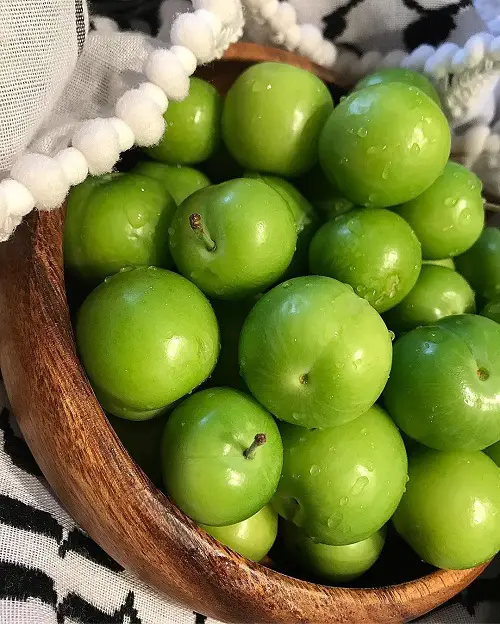
Botanical Name: Prunus mume
USDA Zones 4-8
The sour plum is a fruit that is native to Asia and is similar in appearance to a small plum. This fruit is very tart and is usually grown in mountainous regions.
Here is the list of Fruits That Start With X
18. Soursop
Botanical Name: Annona muricata
USDA Zones: 10-11
Soursop is a tropical fruit with a sweet and tangy flavor and a creamy, custard-like texture. It is packed with vitamins and antioxidants. Growing soursop requires a warm, tropical climate, with temperatures above 60°F (16°C) year-round.
19. Spanish Lime

Botanical Name: Melicoccus bijugatus
USDA Zones: 10-12
Spanish lime, also known as mamoncillo, this small green fruit is native to Central and South America. The fruit is similar in taste to a cross between a lime and a lychee, with a sweet and tangy flavor.
20. Spiked Melon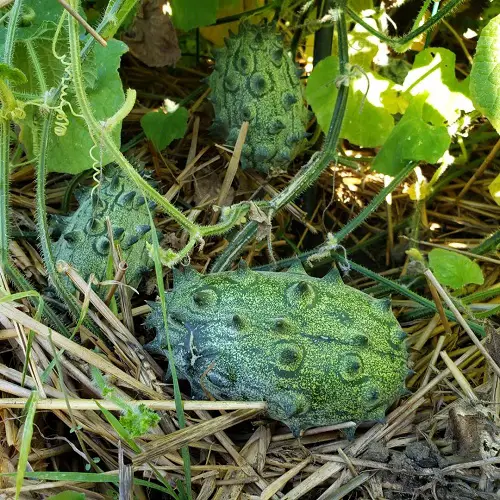
Botanical Name: Cucumis metuliferus
USDA Zones: 9-11
Spiked Melon is also known as Kiwano. This unique fruit has a spiky, bright orange exterior and a green, jelly-like interior. The fruit has a tart and refreshing flavor.
21. Star Apple

Botanical Name: Chrysophyllum cainito
USDA Zones: 10-11
This tropical fruit has thin, purple skin and a creamy white interior. The fruit has a sweet and slightly tangy flavor and is commonly grown from seeds. In a few years, the tree will be ready to harvest fruits.
Learn How to Grow Crab Apples here
22. Starfruit
Botanical Name: Carambola
USDA Zones: 9-11
Starfruit is a tropical fruit that is shaped like a star when sliced. It has a sweet and tangy flavor, and it is packed with lots of nutrition. Starfruit trees require full sun and well-draining soil.
Here is How to Grow Star Fruit
23. Strawberries

Botanical Name: Fragaria
USDA Zones: 3-11
Strawberries are a classic fruit that is loved by people of all ages. They are packed with vitamin C and antioxidants. Strawberries are easy to grow from seeds and can be grown in containers or in the ground.
Learn everything about growing strawberries here
24. Strawberry Guava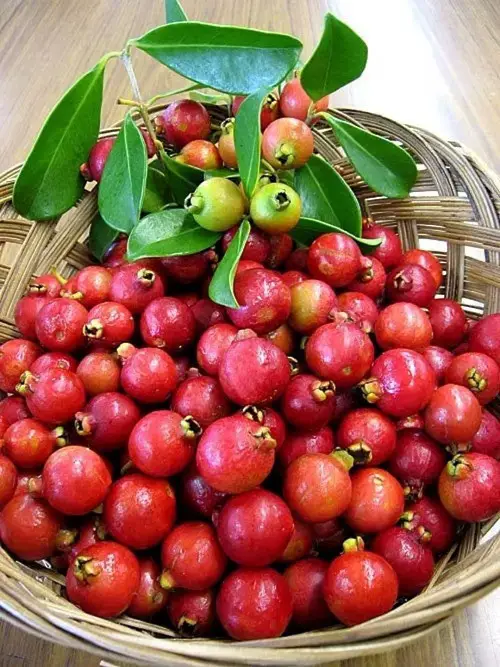
Botanical Name: Psidium cattleianum
USDA Zones: 9-11
Strawberry guava is a small, red fruit that is native to South America but is now grown in many tropical regions. It has a sweet and tangy flavor with a strong aroma. The fruit is popular for growing more quickly than other varieties.
Learn about Growing Guava in Pots here
25. Sudachi
Botanical Name: Citrus sudachi
USDA Zones: 9-11
This small, green fruit is a type of Japanese citrus with a tangy, acidic flavor. The fruit is commonly used in Japanese cuisine, such as in sauces and dressings. Sudachi loves the sun, so you should plant it in a spot that receives plenty of sunlight.
26. Sugar Apple
Botanical Name: Annona squamosa
USDA Zones: 9-11
Sugar apples, also known as custard apples, are tropical fruits that are native to South America and the Caribbean. The fruit is sweet and creamy with a custard-like texture. Sugar apple trees are small to medium-sized evergreen trees that can grow up to 20 feet tall.
Learn How to Grow Sugar Apple Here
27. Sugar Baby Watermelon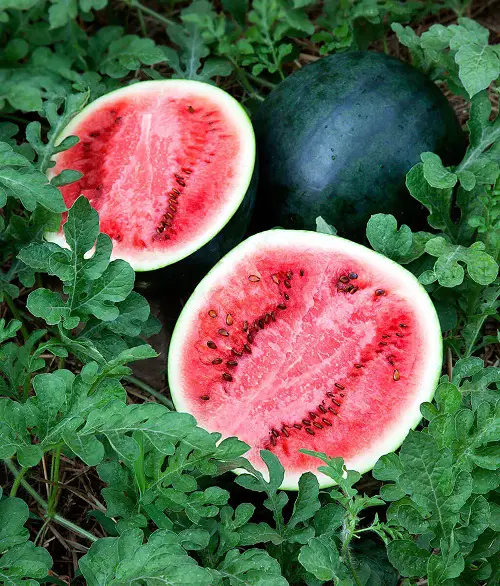
Botanical Name: Citrullus lanatus
USDA Zones: 4-11
This small, round watermelon is known for its sweet, juicy flesh and dark green skin. The fruit is popular for snacking. Interestingly, this watermelon variety is one of those that produce early fruiting.
28. Sugarberry

Botanical Name: Celtis laevigata
USDA Zones: 5-9
Sugarberry, also known as Hackberry, this fruit is native to North America and has a sweet, nutty flavor. The fruit plant can be easily grown from seeds.
29. Sugar Palm Fruit

Botanical Name: Arenga pinnata
USDA Zones: 10-11
This fruit comes from the sugar palm tree and has a sweet, jelly-like flesh. The fruit is commonly used in Southeast Asian cuisine. And, the best part about this plant is it is hardy and can even survive for a whole century or even more.
30. Sunset Apple
Botanical Name: Malus domestica
USDA Zones: 4-9
This apple variety has red and yellow striped skin and sweet, crisp flesh. The fruit is commonly eaten fresh. You can grow this apple variety in a temperate climate.
Here’s all you need to know about How to Grow An Apple Tree in Container
31. Sweetbay Magnolia

Botanical Name: Magnolia virginiana
USDA Zones: 5-10
While not typically thought of as a fruit, the Sweetbay Magnolia tree produces small, red berries that are commonly eaten by birds. The berries are not typically consumed by humans due to their bitter taste.
32. Sweet Cherries
Botanical Name: Prunus avium
USDA Zones: 5-9
Sweet cherries are a delicious and nutritious fruit that is packed with antioxidants and fiber. The fruit of the sweet cherry tree is typically bright red or dark purple, with sweet and juicy flesh surrounding a hard pit in the center.
33. Sweet Granadilla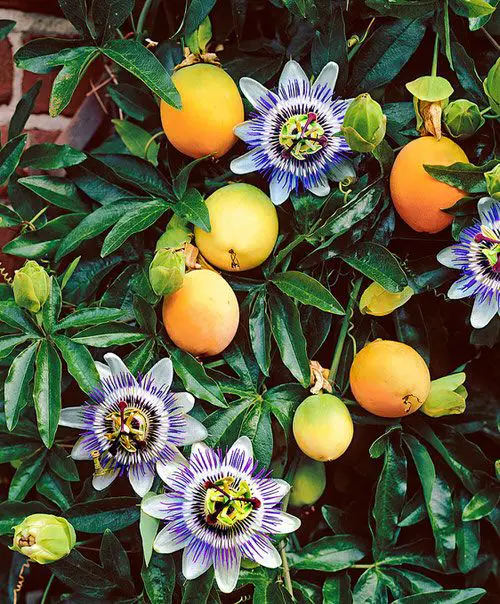
Botanical Name: Passiflora ligularis
USDA Zones: 10-11
The sweet granadilla, also known as the grenadia, is a tropical fruit that is native to South America. It belongs to the Passionflower family. The fruit is round or oval-shaped with a thick, hard shell that is yellow or orange when ripe.
Here are Delicious Fruits That Start With A
34. Sweet Lime

Botanical Name: Citrus limetta
USDA Zones: 9-11
Sweet lime, also known as the sweet lemon, is a citrus fruit that is similar in appearance to a lemon. It belongs to the citrus family. The fruit is round or oval-shaped with thin, smooth, and greenish-yellow skin.
35. Sweet Orange
Botanical Name: Citrus sinensis
USDA Zones: 9-11
Sweet orange is a citrus fruit that is the most widely cultivated tree fruit in the world. The fruit is round or oval-shaped with smooth, orange-colored skin. It’s flesh is juicy and sweet, with a few seeds. Sweet orange trees grow best in warm climates.
36. Sweet Pepper
Botanical Name: Capsicum annuum
USDA Zones: 5-12
Sweet pepper, also known as bell pepper or capsicum, is technically a fruit that is commonly used in cooking. It belongs to the Nightshade family. The fruit is shaped like a bell or cone and comes in different colors, such as green, red, yellow, and orange.
37. Sycamore Fruit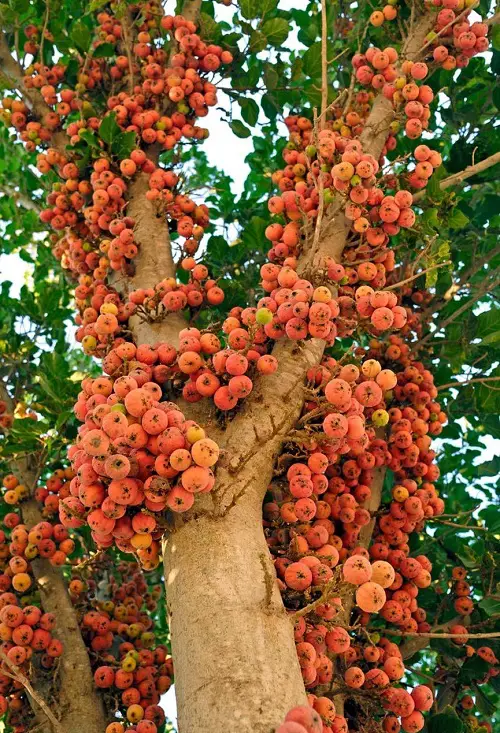
Botanical Name: Ficus sycomorus
USDA Zones: 4-9
The sycamore fruit, also known as the buttonball or sycamore fig, is a fruit that comes from the sycamore tree. It belongs to the plane tree family. The fruit is round and covered in small bumps or scales. It is usually green or brown when immature and turns brown or gray when ripe.



